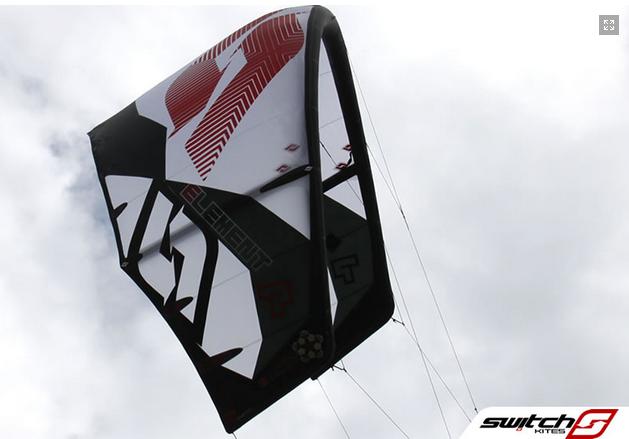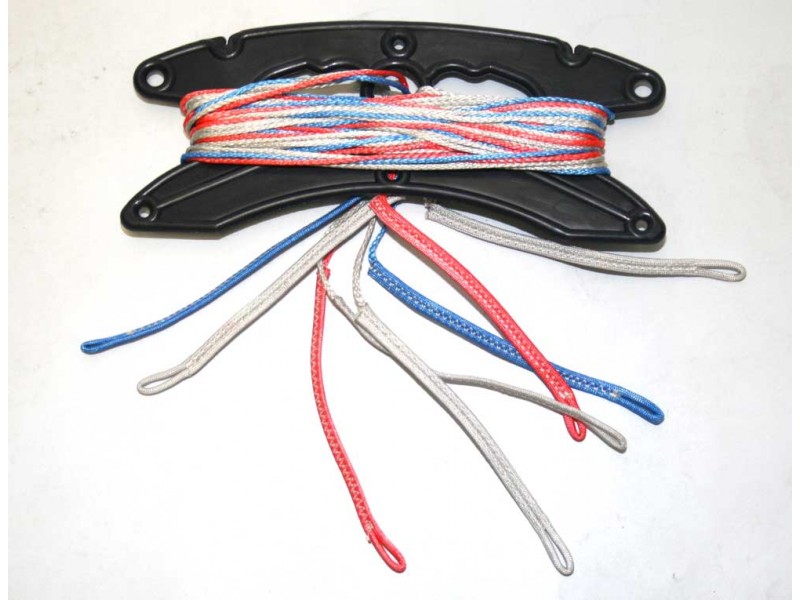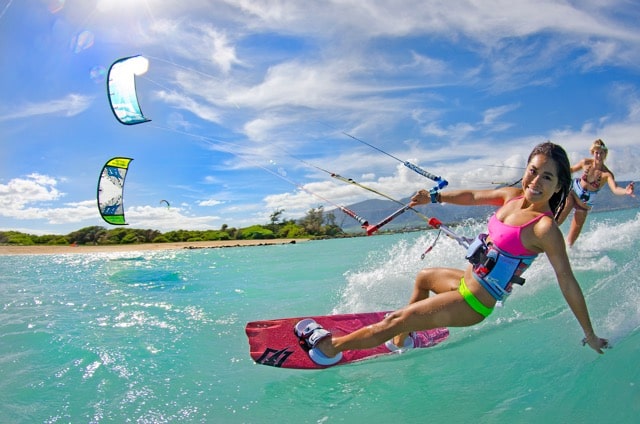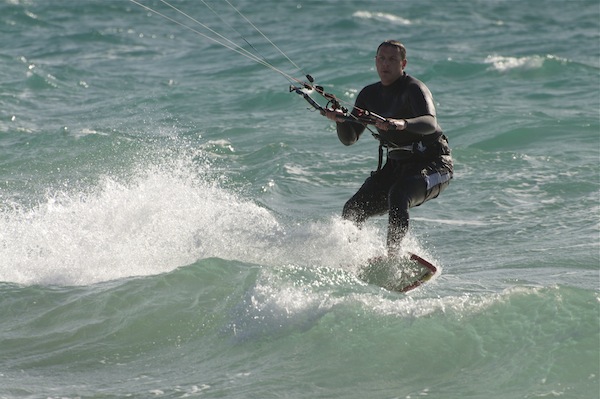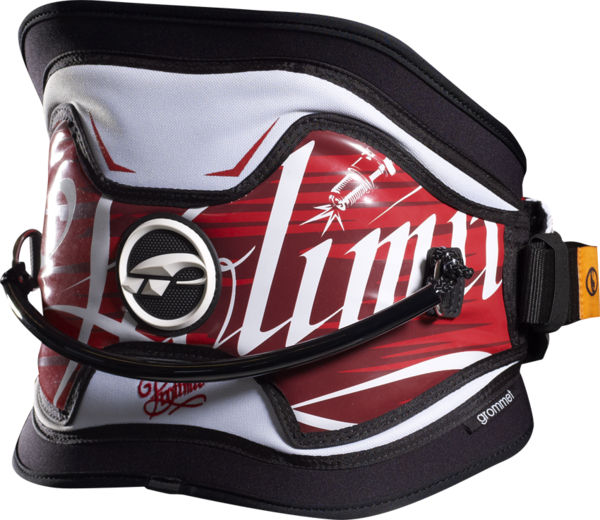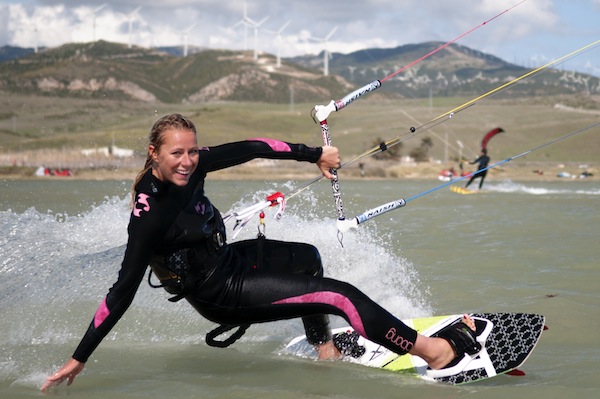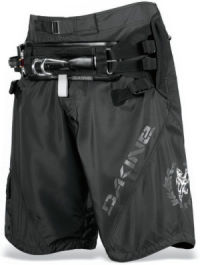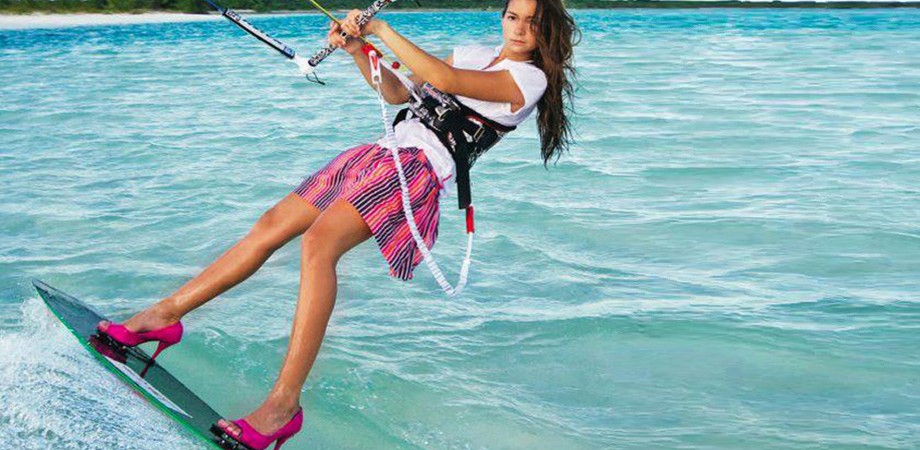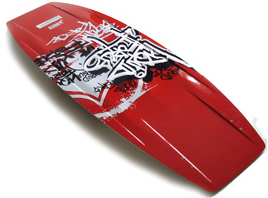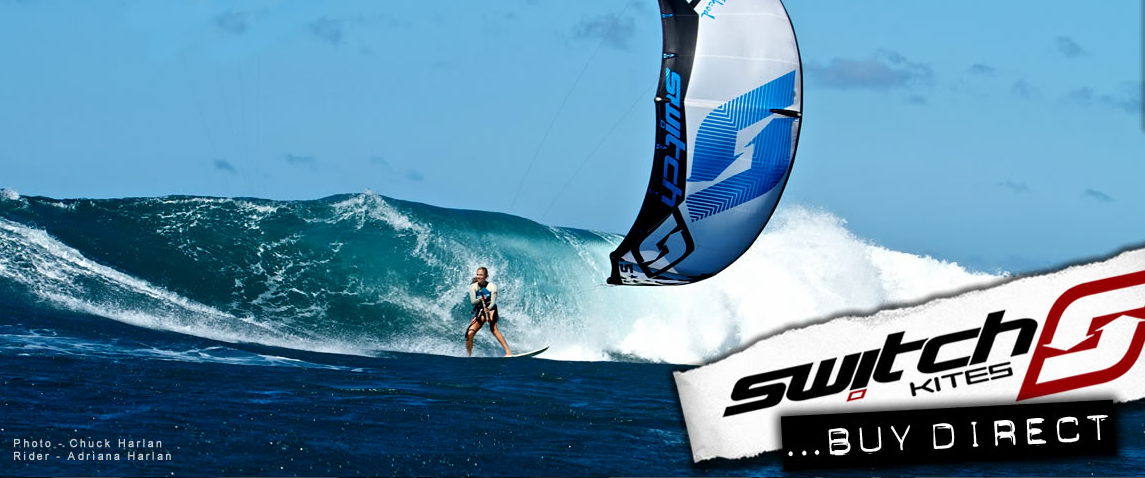
We’re going to take a look at one of the new players in the kiting industry rocking the boat with their disruptive business model, namely by only selling direct and thus cutting the cost of kitesurfing equipment almost in half. Switch kites are leading the charge in this Brave New World.
Simply put the only place to buy a Switch kite is from their website. That way they don’t have dealers or distributors who then add their own margin on to the original cost of the kite. They have several warehouses around the world where the kites are drop shipped from (often with next day delivery).
This model means that Switch can deliver top of the range kites and boards at almost half the price of brands with a more traditional model of distribution. Last we checked a brand new 11m kite and bar from the Switch website was a little over 800 €…and these babies really are top quality.
Designed as the all rounder free ride kite in the Switch line up the Element is marketed to:
“All skill levels, from the novice rider through to the hardcore all rounder: The Element is the one kite travel companion when exploring the world.”
We ordered our Element off the Switch website and found the process as easy as it gets on the internet. 5 days later the kite was there on our doorstep (5 days as we’re in Europe) if you’re in the UK or a country where one of the 5 Switch warehouses is located it’s next day delivery.
[youtube height=”315″ width=”560″]http://www.youtube.com/watch?v=deh2owI-lII[/youtube]
The Bag
Straight out of the bag you get the impression that this is something pretty special. The bag is stylish and compact. It has a pocket inside the bag to hold the bar (which also has it’s own bag) so when you’re traveling the bar is nicely tucked away inside the bag and the only thing outside the bag is the pump, which attaches on the lid of the bag. The zip has protection so you don’t catch the kite when zipping the bag up and in a nice touch you get a spare inflate nozzle attached to the bag. (more on that later). It also has netting on the underside of the bag to let excess sand drain out once you’ve packed away. Inside the front pouch of the bag is a repair kit, nicely packaged in a canvas wallet containing everything you need for emergency repairs at the beach, and of course the regulation stickers! In short we were impressed from the outset.
The Bar
Some very well thought out features here. The first thing we noticed when rolling it out was the choice of attachment points for the lines so you have the choice of positioning the lines on wide or narrow setting meaning no more needing to buy 2 bars. If want to fly with a smaller kite, just re attach the lines at the narrow setting (done easily using a larks head) and the bar changes from a 55cm bar to a 45cm bar and you’re off.
The lines come with 3 metre extensions (taking them from 23m down to 20m) but unusually these are at the bar end of the lines. This is actually brilliant. The extension attachments are simply spliced line so they are nice and discreet and by having them at the bar end of the line it avoids them getting tangled anywhere near as much as they would if they were at the top of the lines (where the lines naturally tangle more easily), a very nice touch.
The centre lines have a swivel to keep them from getting twisted, unlike many of these systems this one actually works. The de-power is above the bar and is very easy to pull on and lock off even when over powered. One slight caveat is that once pulled the loose de-power line tends to flap around and get twisted round your lines, while there is a velcro attachment, it very quickly stops working effectively and it would be nice if there someway of locking this down neatly. (this apparently has been fixed in later models of the bar…see the comments below)
Again in another nice touch the donkeys dick is curled to avoid it accidentally releasing if you catch it on you harness while pulling the bar in too close.
The Kite
The kite is a 3 strut affair with a one pump system. The first thing you notice it when inflating it is the inflate valve. Looking something of a cross between the Cabrinha system and the Liquid Force system it’s a one way valve that requires a specialist nozzle but massively reduces inflate/deflate times. You get one of these nozzles attached to the pump and in case you lose it or forget your pump that day there’s a spare one attached inside the front pocket of the bag. The whole system works very well and we love the “screw me or lose me” reminder on the kite, ensuring you close the valve every time you pack the kite away…whilst obviously smiling and thinking of the second most fun thing to do in the world!
The kite itself has all the features that you would expect from a modern kite but that non of us really understand. Kevlar reinforcement, those funny handles on the wind tips to self rescue with, and all the technical bits with overly complicated names that i’m not going to get into here. Most importantly it looks solid, stylish and well made.
The ultimate question of course is how does it fly?
Quite frankly brilliantly. We have an 11m Element and I have to say it feels more like a 9m it’s that fast. Super stable with easy relaunch, it does everything you’d want in an all round kite with a nice balance of low and top end, decent boosting and an easy, fluid feel.
Now we’ve only had ours about a month so have yet to really test it’s construction but at long as that holds I do think we could be starting a long love affair with Switch kites.
[youtube height=”315″ width=”560″]http://www.youtube.com/watch?v=vKBie6SJuM0[/youtube]
Cut The C***!
Now I hate these reviews in kite mags that simply blow sunshine up kite manufacturers asses because they rely on them for advertising and I always promised myself it was something we would stay well away from and so I have to put something detrimental about these kites, my conscience simply won’t allow me to be so sugary.
If I had to pick one thing it would be the customer service at Switch often leaves something to be desired…these guys do not respond to email well. We’ve sent them quite a few emails over the past few weeks and either had to wait a long time for a reply or more commonly simply received no reply at all. The best way to get in touch seems to be through the live chat on their web site which in fairness is manned fairly consistently
All in all though this kite is quite frankly awesome, it looks and handles like a kite that you’d expect to pay around 1400€ for and the 11m kite and bar cost us 822 € delivered to our door, I just really don’t think you can argue with that.
This article was taken from Tantrum Kitesurf Magazine…start your FREE trial today!
